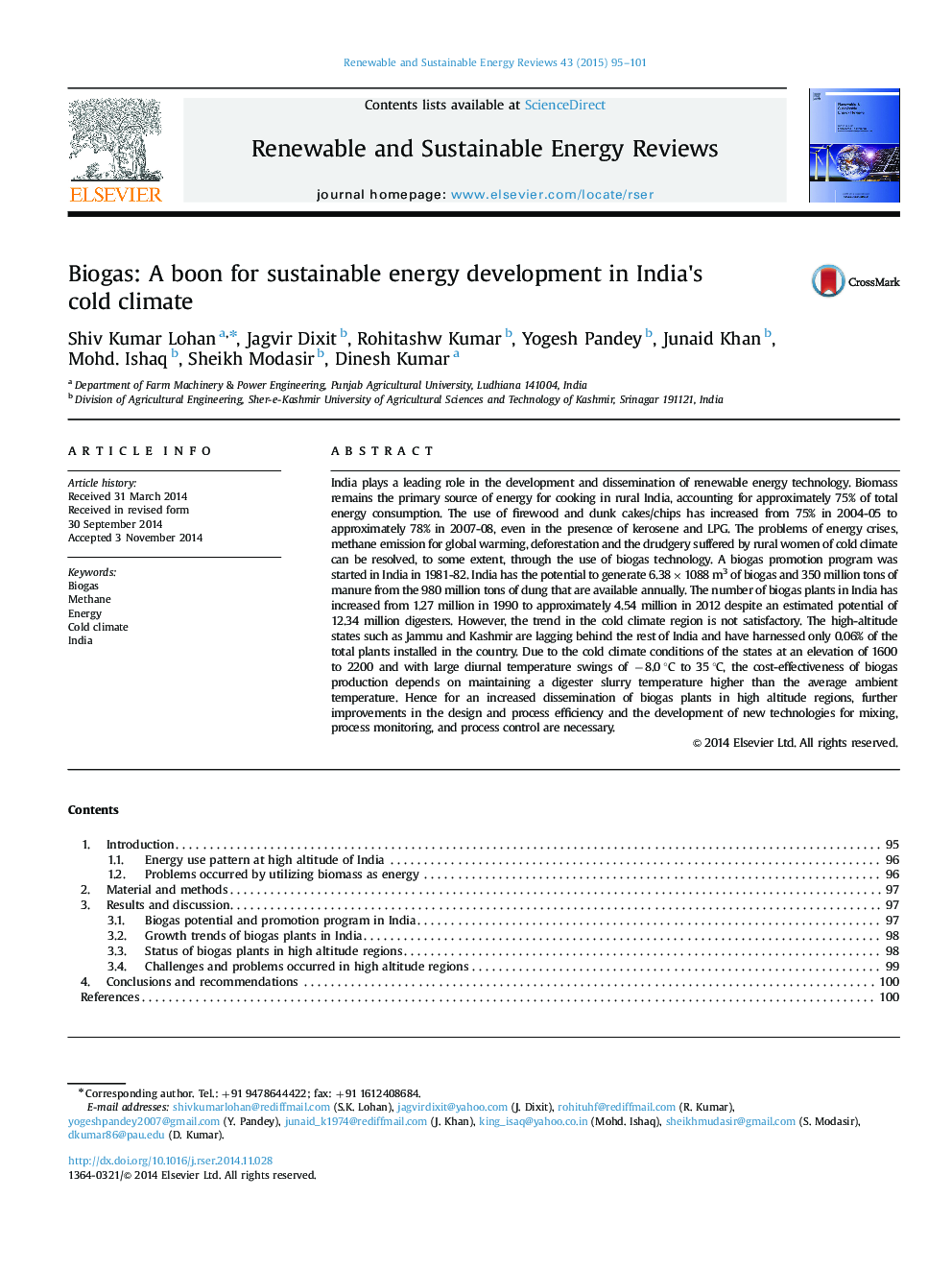| Article ID | Journal | Published Year | Pages | File Type |
|---|---|---|---|---|
| 8117435 | Renewable and Sustainable Energy Reviews | 2015 | 7 Pages |
Abstract
India plays a leading role in the development and dissemination of renewable energy technology. Biomass remains the primary source of energy for cooking in rural India, accounting for approximately 75% of total energy consumption. The use of firewood and dunk cakes/chips has increased from 75% in 2004-05 to approximately 78% in 2007-08, even in the presence of kerosene and LPG. The problems of energy crises, methane emission for global warming, deforestation and the drudgery suffered by rural women of cold climate can be resolved, to some extent, through the use of biogas technology. A biogas promotion program was started in India in 1981-82. India has the potential to generate 6.38Ã1088 m3 of biogas and 350 million tons of manure from the 980 million tons of dung that are available annually. The number of biogas plants in India has increased from 1.27 million in 1990 to approximately 4.54 million in 2012 despite an estimated potential of 12.34 million digesters. However, the trend in the cold climate region is not satisfactory. The high-altitude states such as Jammu and Kashmir are lagging behind the rest of India and have harnessed only 0.06% of the total plants installed in the country. Due to the cold climate conditions of the states at an elevation of 1600 to 2200 and with large diurnal temperature swings of â8.0 °C to 35 °C, the cost-effectiveness of biogas production depends on maintaining a digester slurry temperature higher than the average ambient temperature. Hence for an increased dissemination of biogas plants in high altitude regions, further improvements in the design and process efficiency and the development of new technologies for mixing, process monitoring, and process control are necessary.
Keywords
Related Topics
Physical Sciences and Engineering
Energy
Renewable Energy, Sustainability and the Environment
Authors
Shiv Kumar Lohan, Jagvir Dixit, Rohitashw Kumar, Yogesh Pandey, Junaid Khan, Mohd. Ishaq, Sheikh Modasir, Dinesh Kumar,
